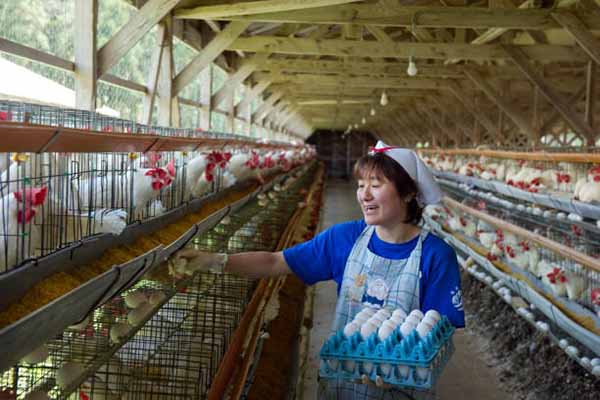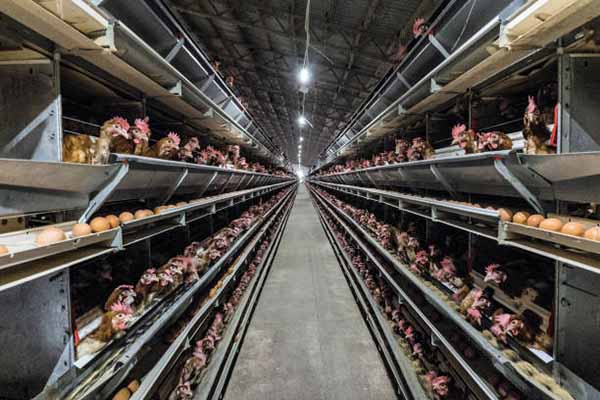Layer Farming Business Plan in India: A Comprehensive Guide
Time : 2025-07-03
Layer farming, the practice of rearing hens for egg production, is a burgeoning industry in India, thanks to the rising demand for eggs in both urban and rural areas. Crafting a business plan for a layer farming venture in India requires a strategic approach, considering various factors such as market demand, operational costs, and regulatory compliance. This article provides a detailed layer farming business plan template for aspiring entrepreneurs in India, focusing on professional expertise and SEO optimization.
Executive Summary
The executive summary of your layer farming business plan should briefly describe the business, its mission, objectives, and key milestones. It should also include information on the management team, financial projections, and funding requirements.
1. Industry Overview
India has a growing population, which is driving the demand for eggs. According to the National Egg Coordination Committee (NECC), India is the second-largest producer of eggs in the world. The industry is segmented into broiler, layer, and quail farming, with layer farming accounting for a significant share of the total production.
Key trends in the Indian layer farming industry include:

- Rising per capita egg consumption
- Increasing awareness of health benefits of eggs
- Advancements in feed and veterinary care
2. Market Analysis
A thorough market analysis is essential for understanding the competitive landscape and potential customer base. Here are some key points to consider:
- Identify target markets: Supermarkets, restaurants, hotels, institutional catering, and local retail stores.
- Analyze market trends: Look at the demand for organic eggs, eggs from free-range hens, and eggs from specific breeds.
- Understand competition: Evaluate the strengths and weaknesses of local and national competitors.
3. Business Model
Your layer farming business model should outline how you will produce, market, and distribute your eggs. Consider the following aspects:
- Production: Choose the appropriate breeds of hens and the size of the flock. Consider using modern equipment for better efficiency and output.
- Marketing: Develop a marketing strategy that includes brand building, direct sales to consumers, and partnerships with local retailers.
- Distribution: Determine the most cost-effective way to distribute your eggs, whether through cold storage, transportation, or partnerships with local delivery services.
4. Operations Plan
The operations plan should detail the day-to-day activities of your layer farming business. This includes:
- Facility layout and construction: Design a layout that ensures proper ventilation, temperature control, and access to feed and water.
- Hen housing: Choose between traditional battery cages or alternative systems like deep litter, free-range, or organic farming.
- Equipment: Invest in high-quality layer farming equipment such as feeders, drinkers, lighting systems, and automatic collection systems.
- Manpower: Hire skilled workers who are knowledgeable about poultry farming and have experience in layer farming operations.
5. Financial Plan
A well-structured financial plan is crucial for securing funding and monitoring the financial health of your business. Consider the following:
- Start-up costs: Include costs for land, construction, equipment, feed, labor, and other overhead expenses.
- Operating costs: Estimate regular expenses such as feed, utilities, insurance, and labor.
- Revenue projections: Calculate potential income based on expected egg production and sales price.
- Break-even analysis: Determine the point at which your business will become profitable.
6. Risk Analysis
Risks in layer farming include:
- Market risks: Fluctuations in demand, prices, and competition.
- Production risks: Diseases, pests, and other factors that can affect egg production.
- Regulatory risks: Compliance with local, state, and national regulations regarding poultry farming.
Develop strategies to mitigate these risks, such as obtaining insurance, implementing biosecurity measures, and staying informed about regulations.

7. Marketing and Sales Strategy
 Your marketing strategy should focus on building brand awareness and attracting customers. Consider the following:
Your marketing strategy should focus on building brand awareness and attracting customers. Consider the following:
- Branding: Develop a strong brand identity that resonates with your target market.
- Advertising: Use various channels such as social media, local newspapers, and digital marketing to reach your audience.
- Sales: Implement direct sales strategies and establish relationships with key customers to ensure a steady supply of eggs.
8. Conclusion
A comprehensive layer farming business plan is essential for success in the Indian egg market. By following the guidelines outlined in this article, aspiring entrepreneurs can create a solid foundation for their business, ensuring a sustainable and profitable venture.
References
- National Egg Coordination Committee. (2020). India Egg Industry Status Report.
- Poultry Science. (2019). Advances in layer farming technology.











